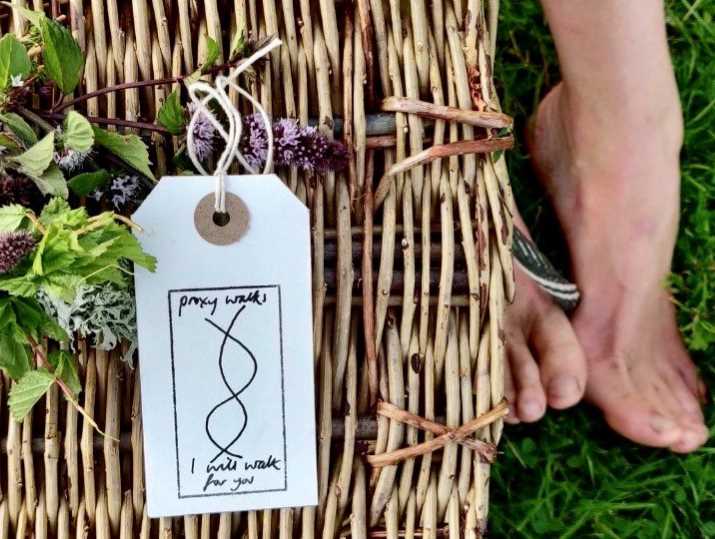For me, one of the wonderful things about Paths for All is that it engages with the full spectrum of walking and walking abilities, including, if it doesn’t seem paradoxical, the idea of ‘not walking’. Recently I’ve been writing about the experience of losing walking, in particular, the loss of one’s ability to walk, through chronic illness.
We’re living through a historic moment, best summed up as mass disabling event, arguably prolonged by the policy of governments around the world, which have come to accept the circulation of Covid as inescapable. Whatever we think about the pandemic, a consequence that is inescapable is that in the UK 2.3 million people now have Long Covid and, worryingly, for each eight infections, it’s estimated one more person will become chronically ill. No one expects this to happen to them. For many, one of the most shocking or distressing symptoms is the loss of walking and the ways in which this changes their world.
The consequence of the pandemic is that an enormous population of people are now struggling with exhausting fatigue, disability, and new limits. Many are isolated, house- or bedbound. More than 160,000 people in Scotland have Long Covid. There’s no dedicated clinic to help them.
What has this to do with Path for All? One thing I learnt from community walking groups is how important solidarity and shared company are to those who take part. This is especially true in the bruised and exhausted mood that abounds. Although Paths for All group activities were curtailed during lockdown, many people began to make wee walks for others, collecting their shopping, or delivering necessities and comforts. It was a time when there seemed to be a new awareness of what walking meant, and, just as importantly, the impact of not walking.
When I speak of ‘not walking’, or losing walking, I don’t have in mind people who become paraplegic – though some are house- or bedbound – rather, what I have in mind is the loss of an ability to do the things people once considered normal, like walking to the shops, or the bus stop, or accompanying their kids to school. Suddenly this strange illness, which seemingly won’t heal, means that their world no longer joins up in the ways it once did. It’s only in losing their freedom to walk that people realise what walking meant to them.

For many their main symptom is the energy ‘crash’, episodic relapses, or what is known medically as ‘post-exertional malaise’, which is an extreme reaction that follows exercise, such as a walk. There is little accurate medical description of these symptoms, and, for many, they have to learn their new limits by repeated trial and error. Being unable to walk doesn’t swich off the desire to walk in our mind.
I always remember Carl, one of my friends who works for Paths for All, describing the need to encourage someone to walk from their sofa to the window, if that is all they can manage. A view of nature can be a huge comfort, allowing the imagination to roam. For some their world has shrunk to the size of a garden, for others, a circle has been drawn at a distance of a couple of hundred yards. Yes, they can walk, but to such a small extent that there isn’t the possibility of ‘making a walk’.
Having had limited walking for thirty years, because of ME (myalgic encephalomyelitis), I’ve been considering how we can make minor walks, or very short walks interesting, whether that’s by learning about place-names, or studying flowers and foraging. How can we walk without exhausting ourselves?
Turning my attention to ‘not-walking, for a few years I’ve been dreaming of a new project called ‘proxy walks’. The idea is that someone, anyone, will make a walk in a place for someone else, bringing back a description of it. It’s a very simple idea, but also very powerful, because it returns the idea of belonging in the world, on or a hill, to someone who feels they can’t.
A recent blog, which I published recently, describes the first proxy walk, and explains some of the thinking behind it. We’re used to the idea of using our ability to walk to benefit others, fetching or delivering things, making a social call. In the proxy walk what we carry are impressions and memories.
If you know someone who has lost the ability to make a walk, then why not gift a walk for them? One of the ways we connect to one another is through our individual experiences of nature, and a proxy walk invites us to pause and attach words and images to the richness of sensory experiences which enter through our senses. Field recordings, nature programs, and books, can bring us close to the natural world but, being relational beings, it means more to give and receive a walk. You’ll discover the benefits of such acts of solidarity don’t flow one way, for, when we walk for those who can’t, the eye of our attention to become the thought of our appreciation. Whenever we have to give words to something it goes deeper into us.
At a time when so many people are struggling with walking, or exiled by the need to shield, inevitably, the newly disabled and those left behind by the myth the pandemic is over, feel abandoned. Your kindness will be returned in their sense of being, once again, part of the commonweal. Remember, with Covid still causing so many cases of chronic illness, someday it could be you that needs to be walked for.


